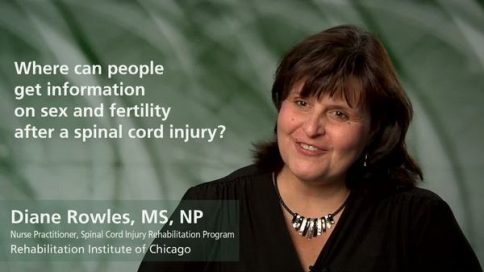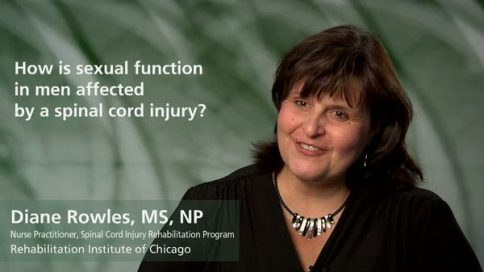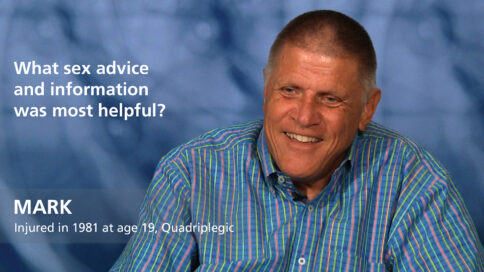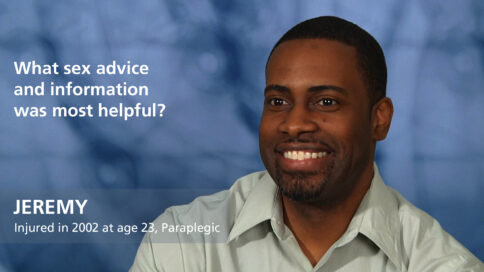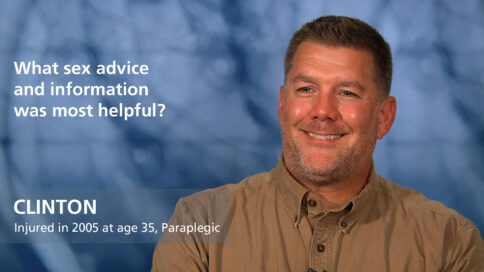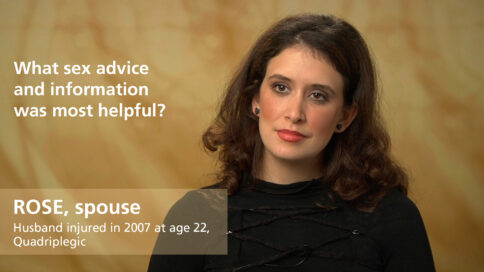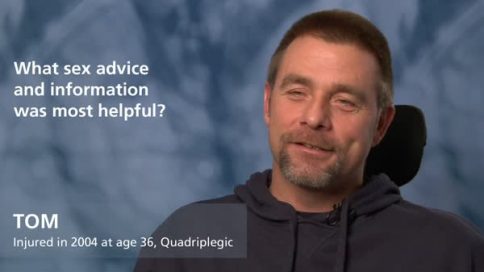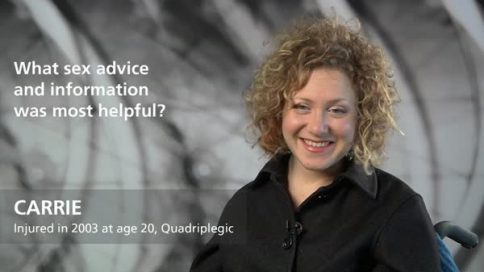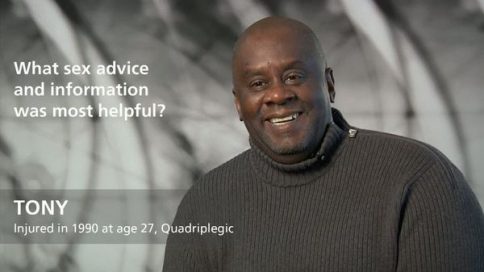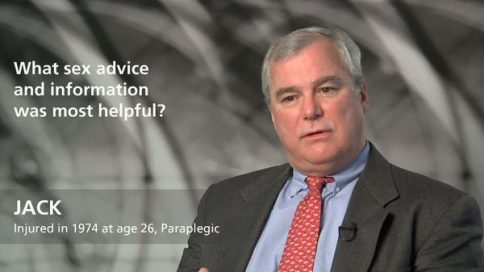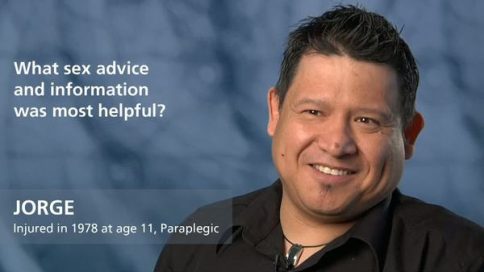How does a spinal cord injury affect male fertility? - Diane M. Rowles, MS, NP
|
|
How does a spinal cord injury affect male fertility? |
|
Diane M. Rowles, MS, NPNurse Practitioner, Spinal Cord Injury Rehabilitation Program, Rehabilitation Institute of Chicago |
||
| Read Bio | More Videos by Diane M. Rowles | |
|
Share |
||
Transcript
So, fertility in men after a spinal cord injury, there’s a couple of things to consider. One is the ability to ejaculate. The second is semen quality and quantity. So, considering the anatomy and physiology, the two centers that control ejaculation in the spinal cord injury are T11, some folks will say T10 to L2, the other is S2 to S4. T11 to L2 controls semen omission, which is the release of the semen, and it comes up and sits by the bladder. The S2 to S4 controls ejaculation proper, or the propulsion of the semen out. Unlike erection—most men with spinal cord injury get some form of an erection—far fewer men after spinal cord injury ejaculate, quote-unquote, “normally,” or without help. Because it takes both centers, you have to have the release of the semen, and the propulsion of the semen out for it to go normally. So if you read the statistics, less than 10-percent of men with complete spinal cord injuries—complete being no motor, no sensation below their level of injury—ejaculate normally. Incomplete spinal cord injury is up as high as 70-percent to 80-percent. So what do we do to help if somebody doesn’t ejaculate and they want to father children, or what if they don’t ejaculate, and they just want to know what their sperm count is. So, there’s two procedures that are commonly done in the spinal cord population. One is vibratory stimulation—we take a massager, flip the penis up on the belly, and we massage. What that does is it stimulates that S2 to S4 sacral arch reflex, and stimulates ejaculate to come shooting out. That works on about 50 to 60-percent of the people we do it on. Because we’re stimulating a reflex, it obviously works best on men who have reflexes after their injury. So it generally works best on people with upper motor neuron lesions. For people that that does not work on, there’s a procedure called rectal probe electrical stimulation, or electroejaculation, which is exactly what it sounds like. The person is placed on their side, a rectal probe is placed, electrical volts are stimulated through. But that stimulates the higher-up part of the spine, stimulates the pudendal nerve, the T11-L2 center, and that stimulates semen emission. So then, underneath the scrotum is milked and the semen comes out. That’s successful in over 90-percent of people we tried, so that’s very, very successful. Now the other thing to consider is that infertility in our world, and infertility treatment in our world is huge, it’s out there, and everything that they use for infertility in the able-bodied population, we have available to us in the disabled population also. There’s procedures like Tessie that can also be done where they directly aspinate seamen, or the sperm, from the male, so a surgical procedure that’s done. Generally in the spinal cord world, we start with either vibratory stimulation or electroejaculation. And, if that’s not successful, then we’ll refer on to something that’s more invasive, like a surgical procedure. Sperm quality does not appear to be predictable by level of injury, or completeness of injury. We do know that there’s a tendency for sperm quality or quantity to go down after spinal cord injury. That’s true for some people. Other people, their sperm quality or quantity doesn’t decrease at all. The only way to know after a spinal cord injury is to collect a sample and have it analyzed. Now the theories on why sperm quantity or quality may go down—is it hormone changes?—trauma to the body?—is it poor temperate regulation, so the sperm can’t live?—is it antibodies?—is it frequent urinary tract infections?—frequent antibiotics?—chronic medications?—is it that this happens in young men sometimes, and we don’t know if they went through a normal puberty or not, so we don’t know if they would have had fertility issues with or without their spinal cord injury?—so there’s a lot to take into consideration. As a clinician, all of that’s nice to know, but what I really need to know is I need to collect a semen sample and have it analyzed. And then, again, we can use all the fertility things that are available to the able-bodied population to help improve seamen quality if it is altered, and help with pregnancy. Now, the other important thing to know is that these procedures that we do to collect the semen, the vibratory stimulation can be done at home. And I can teach the significant other how to inseminate at home, and it can all be done at home. The electroejaculation needs to be done in the hospital clinic. Either procedure, we collect the semen into a cup and it’s inseminated.
Show Less|
|
||
add
How does a spinal cord injury affect male fertility? |
||
Diane M. Rowles, MS, NPNurse Practitioner, Spinal Cord Injury Rehabilitation Program, Rehabilitation Institute of Chicago |
More Videos by Diane M. Rowles | |
| Transcriptadd | share | |
So, fertility in men after a spinal cord injury, there’s a couple of things to consider. One is the ability to ejaculate. The second is semen quality and quantity. So, considering the anatomy and physiology, the two centers that control ejaculation in the spinal cord injury are T11, some folks will say T10 to L2, the other is S2 to S4. T11 to L2 controls semen omission, which is the release of the semen, and it comes up and sits by the bladder. The S2 to S4 controls ejaculation proper, or the propulsion of the semen out. Unlike erection—most men with spinal cord injury get some form of an erection—far fewer men after spinal cord injury ejaculate, quote-unquote, “normally,” or without help. Because it takes both centers, you have to have the release of the semen, and the propulsion of the semen out for it to go normally. So if you read the statistics, less than 10-percent of men with complete spinal cord injuries—complete being no motor, no sensation below their level of injury—ejaculate normally. Incomplete spinal cord injury is up as high as 70-percent to 80-percent. So what do we do to help if somebody doesn’t ejaculate and they want to father children, or what if they don’t ejaculate, and they just want to know what their sperm count is. So, there’s two procedures that are commonly done in the spinal cord population. One is vibratory stimulation—we take a massager, flip the penis up on the belly, and we massage. What that does is it stimulates that S2 to S4 sacral arch reflex, and stimulates ejaculate to come shooting out. That works on about 50 to 60-percent of the people we do it on. Because we’re stimulating a reflex, it obviously works best on men who have reflexes after their injury. So it generally works best on people with upper motor neuron lesions. For people that that does not work on, there’s a procedure called rectal probe electrical stimulation, or electroejaculation, which is exactly what it sounds like. The person is placed on their side, a rectal probe is placed, electrical volts are stimulated through. But that stimulates the higher-up part of the spine, stimulates the pudendal nerve, the T11-L2 center, and that stimulates semen emission. So then, underneath the scrotum is milked and the semen comes out. That’s successful in over 90-percent of people we tried, so that’s very, very successful. Now the other thing to consider is that infertility in our world, and infertility treatment in our world is huge, it’s out there, and everything that they use for infertility in the able-bodied population, we have available to us in the disabled population also. There’s procedures like Tessie that can also be done where they directly aspinate seamen, or the sperm, from the male, so a surgical procedure that’s done. Generally in the spinal cord world, we start with either vibratory stimulation or electroejaculation. And, if that’s not successful, then we’ll refer on to something that’s more invasive, like a surgical procedure. Sperm quality does not appear to be predictable by level of injury, or completeness of injury. We do know that there’s a tendency for sperm quality or quantity to go down after spinal cord injury. That’s true for some people. Other people, their sperm quality or quantity doesn’t decrease at all. The only way to know after a spinal cord injury is to collect a sample and have it analyzed. Now the theories on why sperm quantity or quality may go down—is it hormone changes?—trauma to the body?—is it poor temperate regulation, so the sperm can’t live?—is it antibodies?—is it frequent urinary tract infections?—frequent antibiotics?—chronic medications?—is it that this happens in young men sometimes, and we don’t know if they went through a normal puberty or not, so we don’t know if they would have had fertility issues with or without their spinal cord injury?—so there’s a lot to take into consideration. As a clinician, all of that’s nice to know, but what I really need to know is I need to collect a semen sample and have it analyzed. And then, again, we can use all the fertility things that are available to the able-bodied population to help improve seamen quality if it is altered, and help with pregnancy. Now, the other important thing to know is that these procedures that we do to collect the semen, the vibratory stimulation can be done at home. And I can teach the significant other how to inseminate at home, and it can all be done at home. The electroejaculation needs to be done in the hospital clinic. Either procedure, we collect the semen into a cup and it’s inseminated.
